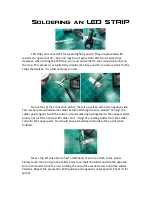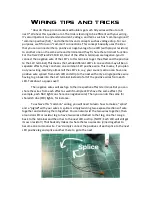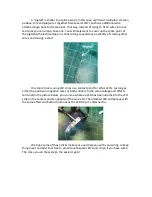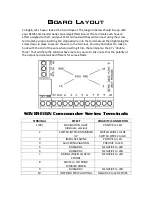
Wiring tips and tricks
“How do those pro and advanced builders get such tidy wires without a rat’s
nest?” We hear this question a lot. The trick is learning to be efficient with your wiring.
It’s also important to understand current, voltage, and terms such as “common ground,”
“common positive (hot),” and other terms and concepts such as voltage drop. For our
purposes, we’ll focus on “common” connections. This concept basically uses the idea
that you can connect either a positive or negative leg of one LED (with proper resistors)
to another one on the same wire and terminal and they’ll share the terminal’s function.
For the Tier2V2/Tier2V2 SFX B kit, most of the effects terminals are negative. (you’ll
connect the negative wire of the LED’s to this terminal to get the effect and the positive
to the 12V terminal) This means that, while different LED’s in one section may all be on
separate effects, they can share one common 12V positive wire. This means, if you plan
out your wiring carefully, almost all the LED’s in, say, your saucer section can have one
positive wire spliced from each LED and strip to the next with only a single positive wire
having to go back into the 12V terminal instead of all of the positive wires from each
LED. Talk about a space saver!
The negative wires will each go to their respective effects terminal. But you can
share the wires from each effect as well if multiple LED’s have the same effect. (for
example, each NAV light can share one negative wire) Then you can do the same for
shared strobe (STR) lights, for instance.
To achieve this “common” wiring, you will need to learn how to make a “splice”
and a “pigtail” with your wires. A splice is simply twisting two exposed sections of wire
together and soldering them together. You can also twist the two wires together, then
around an LED or resistor leg to have two wires attached to that leg, one that can go
back to the terminal and the other to the next LED or strip. (NOTE: Each LED will still get
its own resistor!) That basically makes it where the two wires are joined together to
become one common wire. You’d simply connect the positives of each splice to the next
LED positive leg and splice another there to go to the next.































